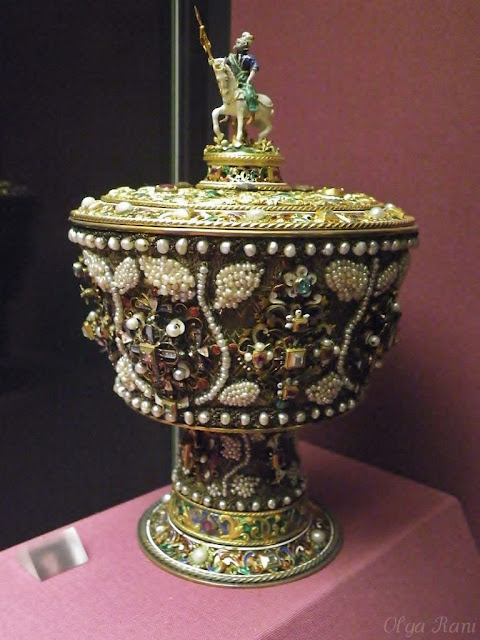The British Museum in London is one of the largest in the world. Its collection numbers more than 7 million items, which are exhibited in 95 galleries. To go through all the halls, it took me 4 days. If you are a tourist then you have just a few hours or maybe one day. So before going to the museum, it is better to think of what you really want to see, what will be interesting to you personally. And then coming to the place all you'll have do is to take the museum map at the entrance and go straight to the gallery you are interested in, and not to wander around many rooms of the museum.

The most visited and popular galleries are the ancient Egypt halls. They are always crowded. And it is no wonder: who would want to miss the opportunity to see the mummies of the pharaohs and their coffins? Besides those mummies there are many other interesting Egyptian things to see: the wall paintings dating 1350 BC, depicting the life of wealthy Egyptians of that time, collections of amulets, jewelry, mummies of cats and other animals.
In addition to all that, the museum has a large collection of Egyptian sculptures. There are huge and small statues of pharaohs; the famous Rosetta Stone, with the help of which the secret of Egyptian hieroglyphs was unlocked; the amazingly beautiful sculpture of the cat goddess Bastet with a gold nose ring and earrings; and the colossal granite scarab beetle.
The collection of the Assyrian reliefs from the Nineveh palace is worth a look. The reliefs depict scenes from the life of the ancient Assyrians - a review of the captured prisoners, a bull hunt, the soldiers swimming across the sea on inflated animal bladders, the chaos in the city duting its capture, the royal lion hunts. Two awesome five-legged human-headed winged lions are also worthy to be seen. Once they guarded the doorway of the throne room of the palace in Nimrud.
The Asian collection includes items from India, China, Korea, Thailand, Tibet, Japan.
In the gallery devoted to India there are many ancient sculptures in stone and ivory, brought from different parts of India. You will find sculptures of Buddha, Hindu deities, dancers there. There are several interesting specimens of ornaments and weapons as well.
In the Chinese collection it will be interesting to see the ceramic figurines, dishes, parfume bottles, porcelain, and in the Japanese one - complete sets of clothes and weapons of samurai , and a large collection of
netsuke.
If you are interested in the art of pre-Columbian America, I recommend to look through a small but impressive collection of Mexican art.
Here you will find basalt and limestone Aztec and Mayan bas-reliefs and stunning mosaic masks and figurines made of turquoise.
The African collection is relatively small, but interesting. There are numerous wooden sculptures from different parts of the black continent; the Mozambican "Tree of Life" sculpture made from decommissioned weapons;
masks, knives and daggers; and ceramics.
A collection of reliefs from the former Benin Empire is also interesting. The most impressive are the ornate 16-th century brass plaques, 900 of which once decorated the royal palace in Benin City.
The European collection is divided into several sections - Prehistoric Europe, Medieval, Renaissance, Europe of the 17-18th, 19th and 20th centuries.
Of course, everyone has his/her own preferences, but in my opinion, the medieval Europe and Europe of the 17-18 centuries halls are the most interesting. I particularly liked the collection of jewelry and weapons. Also the collection has many items of religious purpose, glassware, prints.
Well, these are the most interesting collections of the British Museum from my point of view. There are also halls of the ancient Rome and Greece numbering all kinds of ceramics and busts, but personally I was not very interested. The hall of the Islamic world - a small but nice collection, you can see it if you have time. There are some interesting pieces of weapons, as well as beautiful ornaments decorated with precious stones that once belonged to the Great Moguls of India.
Admission to the museum is free, donations are welcomed. Open daily except 24-26 December and 1 January, from 10 to 17:30, Friday - until 20:30. The museum has a cafe where you can have a snack - salads, sandwiches, pastries and drinks. Prices are reasonable.
See also
Nepali art from the British Museum
Indian art from the British Museum


















.jpg)






No comments:
Post a Comment